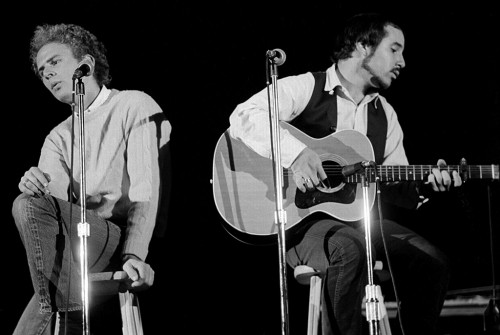 When I shot this photo of Paul Simon and Art Garfunkel in concert at Ohio University on Oct. 29, 1968 (if you can believe the negative sleeve), I didn’t know then that the body language might be a hint of the breakup of the duo coming just two years later.
When I shot this photo of Paul Simon and Art Garfunkel in concert at Ohio University on Oct. 29, 1968 (if you can believe the negative sleeve), I didn’t know then that the body language might be a hint of the breakup of the duo coming just two years later.
The two singers met in elementary school in 1953 (where they appeared in the school play Alice in Wonderland) and recorded their first record as Tom and Jerry in 1957. The went off to separate colleges, but got together after Paul Simon wrote some folk songs, including one dedicated to murdered civil rights worker Andrew Goodman. Goodman had been a friend of both men and a classmate of Simon’s at Queen’s College. They cut Wednesday Morning, 3 A.M., which initially flopped when it was released in 1964.
Is THIS Paul Simon?
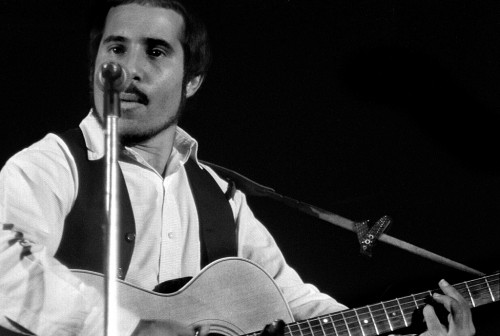 I recognized Garfunkel right away, and the sleeve was tagged Simon and Garfunkel, but this guy didn’t look like the Paul Simon I was used to seeing. I wondered if he was a backup singer. It wasn’t until I covered up the scraggly beard and mustache that I saw Paul emerge. His eyes and nose definitely give him away.
I recognized Garfunkel right away, and the sleeve was tagged Simon and Garfunkel, but this guy didn’t look like the Paul Simon I was used to seeing. I wondered if he was a backup singer. It wasn’t until I covered up the scraggly beard and mustache that I saw Paul emerge. His eyes and nose definitely give him away.
Simon and Garfunkel were at their peak
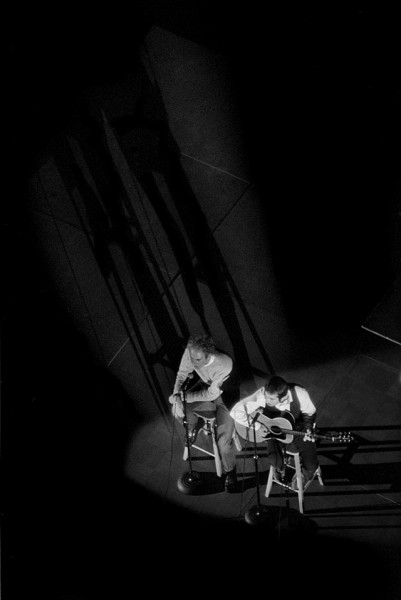 After a few stumbles, they caught fire. The single Sound of Silence became a #1 hit in 1966 and the album by that title made it to #21. Wednesday Morning came back and climbed to #30. The songs kept coming in 1966: Homeward Bound; I Am A Rock; The Dangling Conversation; Parsley, Sage Rosemary & Thyme; A Hazy Shade of Winter. They definitely provided the soundtrack of our lives that year and for the next few.
After a few stumbles, they caught fire. The single Sound of Silence became a #1 hit in 1966 and the album by that title made it to #21. Wednesday Morning came back and climbed to #30. The songs kept coming in 1966: Homeward Bound; I Am A Rock; The Dangling Conversation; Parsley, Sage Rosemary & Thyme; A Hazy Shade of Winter. They definitely provided the soundtrack of our lives that year and for the next few.
Mrs. Robinson was the biggie
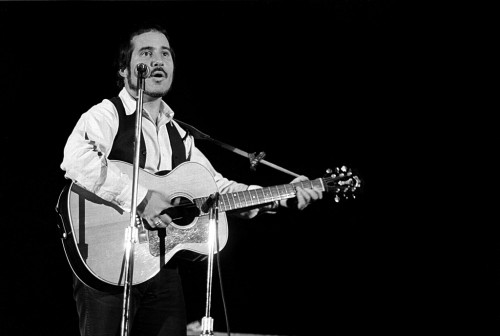 In January, 1968, Mike Nichols’ film The Graduate was released. Peter Bart wrote in a May 15, 2005, issue of Variety that Nichols had been obsessed with S & G’s music while he was shooting the film and had producer Larry Turman cut a deal with Simon to write three new songs for the movie.
In January, 1968, Mike Nichols’ film The Graduate was released. Peter Bart wrote in a May 15, 2005, issue of Variety that Nichols had been obsessed with S & G’s music while he was shooting the film and had producer Larry Turman cut a deal with Simon to write three new songs for the movie.
By the time they were nearly finished editing the film, Simon had written only one new song. Nichols begged him for more but Simon, who was touring constantly, told him he didn’t have the time. He did play him a few notes of a new song he had been working on; “It’s not for the movie… it’s a song about times past—about Mrs. Roosevelt and Joe DiMaggio and stuff.” Nichols advised Simon, “It’s now about Mrs. Robinson, not Mrs. Roosevelt.”
Personal tensions and creative differences caused a strain that reached its breaking point during the production of their last album, Bridge Over Troubled Water in 1970. The album was originally supposed to contain twelve songs, but Simon refused to record a Garfunkel pick and vice versa. It was finally released with only eleven songs on it.
What do I remember about the concert?
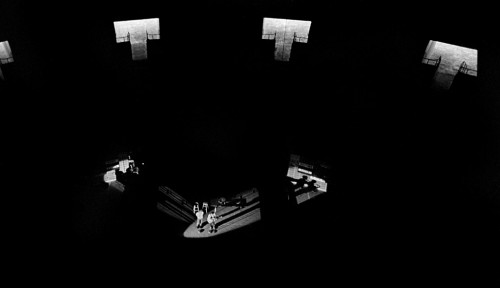 Not a lot. When you’re shooting something like this, you have all your visual senses working. You’re concerned about angles, light, shutter speeds – technical stuff – not the music. I’m sure they played all the favorites, but I don’t know that I actually heard any of them.
Not a lot. When you’re shooting something like this, you have all your visual senses working. You’re concerned about angles, light, shutter speeds – technical stuff – not the music. I’m sure they played all the favorites, but I don’t know that I actually heard any of them.
I learned early on that I couldn’t count on being the best shooter at an event: I had to be the one who showed up earliest, stayed the latest and was willing to scout out the odd positions. I’d cover myself by shooting the standard, “safe” shot, then go looking for the unusual.
I took these high-angle photos from the lighting catwalks high above the concert floor. You don’t ask permission to do something like that because people will find a dozen ways to turn you down. If you just do it, though, everybody assumes that it must be OK.
Not every shot works. This one doesn’t, but you don’t know until you try. It’s always a mistake not to push the button when your instinct tells you to. Something drew your eye there, and if you don’t shoot it at that moment, the magic will leak out if you stop to think about it. You can always discard; you can’t recreate.
Look at the audience
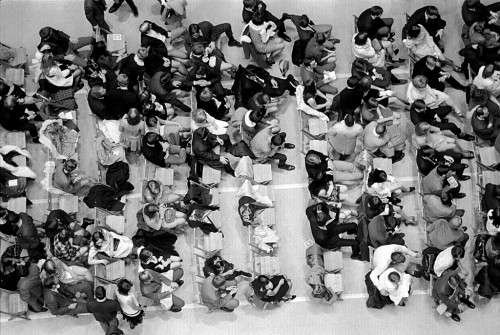 I was surprised to see how well-dressed the audience was. This is a folk-rock concert, so you’d expect to see a lot of casual hippie-type clothing, but most of the guys have on suit coats, if not ties. Hair lengths are Kennedyesque, not shoulder-length. Skirts are delightfully short.
I was surprised to see how well-dressed the audience was. This is a folk-rock concert, so you’d expect to see a lot of casual hippie-type clothing, but most of the guys have on suit coats, if not ties. Hair lengths are Kennedyesque, not shoulder-length. Skirts are delightfully short.
Other concert photos
Simon and Garfunkel photo gallery
There are a lot of “magic moment” photos in this selection that I knew at the time would never make it into the paper, but were recorded anyway. Now that I’m not constrained by the cost of dead trees and ink, you’ll get to see them. Like I said before, most of them don’t work, but they do give you some insight into my thought process and how a picture evolves. Click on any image to make it larger, then click on the left or right side to move through the gallery. Humming of music is allowed.

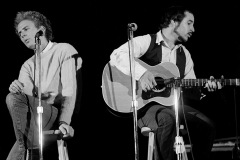
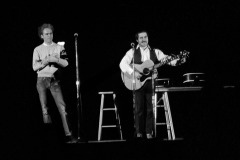
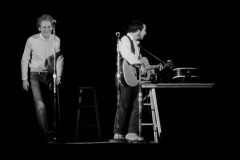
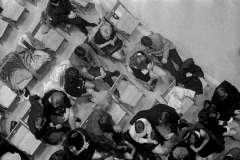
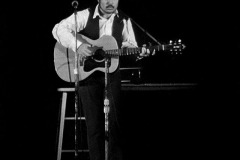
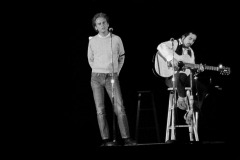
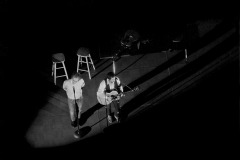
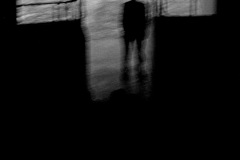
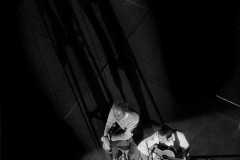
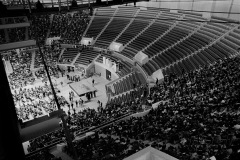
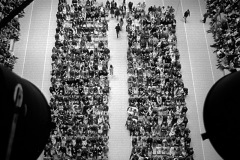
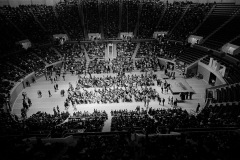
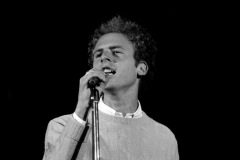
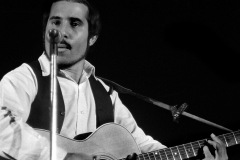
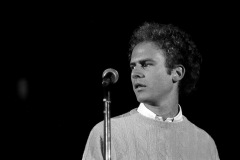
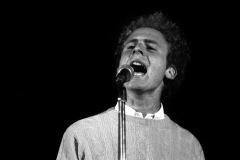
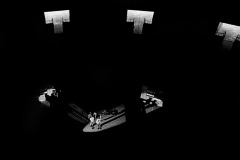
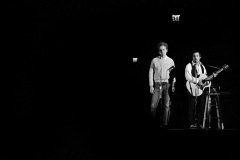
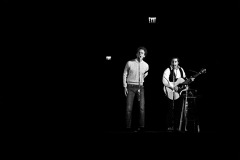
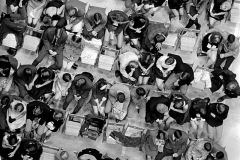
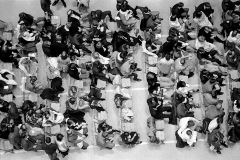
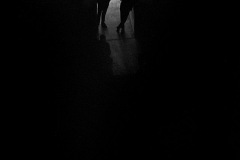
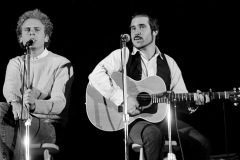
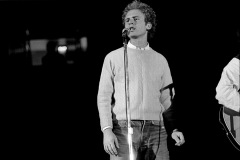
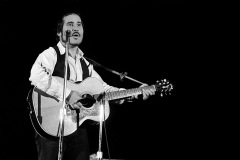
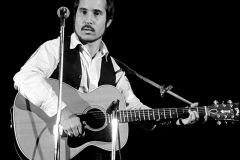
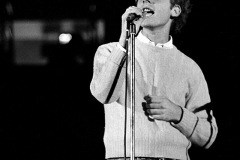
You say you’re surprised not to see casual hippie-style clothing and hair. That’s because S&G did not appeal to hippie types. Those people would have been listening to Dylan, or The Byrds, or Phil Ochs. S&G appealed to older baby boomers (born in the late 40s) who were moderate and not really part of the youth- or counter-culture – though. S&G were pop-musicians, after all.
Saw them in the Fall of 1968 during my first semester in college in Colorado. They were mesmerizing, the finest harmony I’ve ever heard. They visited St. Louis five years ago or so in a reunion tour and were as good then. Query whether any of what passes for popular music today will stand the same test of time. I think not.
I had that debate with some friends the other day. I said that music from the ’60s actually had words, poetry and a message. A lot of that was lost when CD cases didn’t have room for printed lyrics.
One of the reason the Occupy movement hasn’t really caught on is that it doesn’t have a Dylan, Ochs, Seeger, Baez, S&G to create an unifying anthem. Where is Blowing in the Wind, Revolution, Masters of War, I’m Not Marching, We Shall Overcome?
The other thing is, look at what it took to hold a large audience enthralled. Two guys, a couple of guitars and a plain stage. No light shows, no pyrotechnics, no Jumbotrons. I think even the spots were house lights.
It was like when I covered Pete Seeger. After the show, he invited everyone backstage where he signed autographs, shook hands and answered questions until the last person was satisfied. He then slung his banjo and guitar over his shoulder and walked out into the night. No entourage, no demands for the “right” color of M&Ms, no special dressing room requirements. Just a man with a musical message who appreciated his fans and honored them.
The ‘no brown M&M’ request in Van Halen’s concert rider was there for safety not because the band didn’t like brown M&Ms or they were a bunch of divas.
Van Halen had a massive stage setup that required a fair amount of rigging, complex electrical and sound. The theory behind the rider was that if the promoter didn’t read close enough to remove the brown M&Ms, they probably didn’t read close enough to get the right amount of electrical power to the right places either.
The brown M&M requirement was a canary in the coal mine. If they arrived and there were brown M&Ms, the roadies had to spend extra time checking everything provided by the venue promoter.
Cheers,
Matt
I’ve read that explanation, too. I put that reasoning in the same class as the paper “sanitary” bands cheap motels put on their toilet seats to make you feel safe: it’s cheaper to buy a paper band than it is to pay the labor costs of actually cleaning the bathroom.
Finding somebody to remove the brown M&Ms takes less time and effort than making sure all the circuits work.
then there is alway ” eve of distruction” and woodstock. where were you, i was there, knee deep in mud booz and weed. i often wonder how anyone got unified.
I was never a Woodstock fan. It seemed to be the height of self-indulgence. When one of the stage announcement was celebrating how tough they were for sticking it out for three days, I thought, “give me a break.” These are a bunch of college kids on a lark. They don’t know what suffering is (nor did I, truth be told).
I’ve regretted not having a piece of some other big stories – I missed the Civil Rights Movement by a couple of years; I passed on the March on Washington – but Woodstock isn’t on my list of things I’m sorry to have missed. I got to cover a couple of muddy mini-Woodstocks which reinforced that opinion.
Unfortunately, I see too much Woodstock in the Occupy movement.
I WAS THERE !!!! I am going to be 66 in August. What a great memory. Thanks for the pictures.
I was in the audience at their Athens concert in Oct 68, it was terrific. I have for years been trying to remember who the warmup band was- they were quite loud
Your question: Is THIS Paul Simon?
Yes that’s Paul Simon who plays the guitar. I first saw him in 1974 live concert in Japan. And several time after that.
Thanks for the memory. What I remember about the concert was that neither Simon nor Garfunkel said much of anything — no patter, no introductions. Just one song after another. I think at one point someone ran up to put a bouquet of flowers on the stage and one of them might have said, “Thank you.”
Ken, this is AWEsome!
They have matching rings…
I never noticed.